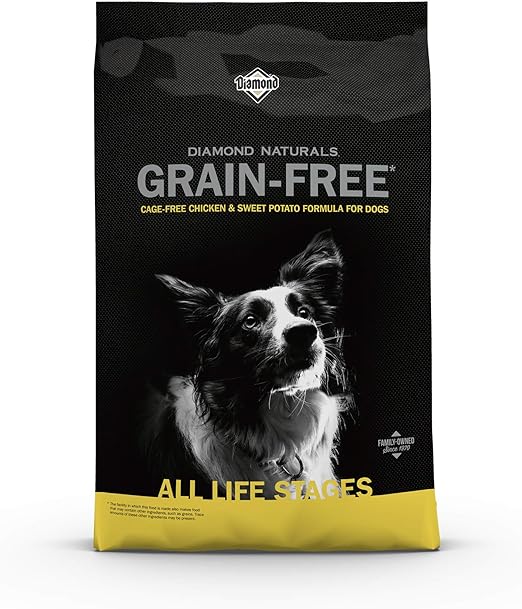Is it just you or does your pup do the darnedest things sometimes? You catch Fido staring at the wall as if it personally offended him, or he starts barking at his own shadow like it might bite back. You can’t help but wonder—what the heck is my dog doing and why? Don’t worry, you’re not alone. All pups have their own unique quirks that seem totally bonkers to us humans. From strange sleeping positions to sudden zoomies that destroy your living room, even the behaviors that make absolutely no sense are normal for dogs. Read on to decode some of the wackiest things your canine companion does that leave you thinking, “What the heckin’ dog is that?” Now you’ll be a pro at interpreting all your pup’s peculiar pastimes.
What the Heckin’ Dog? Decoding Your Pup’s Quirky Behaviors
Ever wonder why your pup does those odd little things? Those quirky behaviors actually have meaning and purpose. Let’s decode some common curiosities.
Circling Before Lying Down
Dogs often circle a few times before settling in for a nap. This instinct dates back to their wild ancestors, who would circle to flatten grass or snow before resting. The circling habit persists even on soft dog beds. Your pup is just following an age-old ritual.
Tilting Head
When your dog cocks their head to the side, they’re trying to get a better view of something that has piqued their interest. Dogs have a wide range of peripheral vision, but some blind spots in front of their face. Tilting their head helps them see and hear more clearly. Head tilting is a sign your pup finds something fascinating and wants a better look.
Licking
Excessive licking can be due to anxiety, boredom or minor medical issue. However, casual licking of humans is usually a sign of affection. Licking releases pleasurable endorphins in dogs, and they often lick people they like. While a little licking is okay, discourage excessive licking to avoid irritation.
Digging Before Lying Down
Some dogs scratch or dig at the floor before settling in for a nap. This traces back to their instinct to dig a nest before resting. Even though your dog has a cozy bed, the urge to dig persists. Gently redirect your dog to an appropriate scratching post or pad when they start digging the floor. With consistency, you can overcome this habit.
- Burying toys or treats
- Rolling in smelly stuff
- Chasing tails
Your dog’s quirky behaviors each have an explanation and purpose. With patience and training, you can curb unwanted behaviors. But their little quirks are part of what gives them character and makes them your lovable companion. Try to appreciate the meaning behind the madness! what the heckin dog
Common Weird Things Dogs Do and What They Mean
Your dog is a curious creature and sometimes does things that leave you scratching your head. Many of these quirky behaviors actually have explanations and are normal for canines. Let’s explore some of the strange things your pup does and what’s really going on. what the heckin dog
Circling Before Lying Down
Ever notice how your dog spins in circles a few times before settling in for a nap? This is an instinctual behavior from their wolf ancestors. Circling helped wolves flatten grass and check the area for threats before resting. Your dog is just following an age-old habit, even though there’s no real purpose for it now.
Head Tilting
When you talk to your dog, do they frequently tilt their head to one side as if trying to understand you? Head tilting is a sign your dog is paying close attention and trying to perceive the meaning behind your words or interpret the sounds you’re making. While adorable, it shows your dog’s attempt to bond with you and comprehend their human. what the heckin dog
Paw Lifting
Some dogs will lift one paw off the ground when interacting with a person or other dog. This is usually a sign of excitement, anxiety, or submissiveness. If the dog seems tense or is panting, it may indicate anxiety. If the tail is wagging and the dog seems happy, it’s probably excitement. Lowering the body or tail may signal submissiveness. Reassuring your dog with pets and a calm, friendly tone can help put them at ease.
Sniffing Butts
Butt sniffing, while unpleasant for humans, is perfectly normal for dogs. Dogs have an incredible sense of smell, and they gain a lot of information from scent glands around the anus and genitals. By sniffing another dog’s butt, they can determine their age, health status, and mood. As rude as it seems, butt sniffing is just your dog’s way of getting acquainted in a manner that’s natural for their species.
Your dog may do peculiar things at times, but rest assured, many of these quirks are natural and help give insight into what your furry friend is thinking or feeling. With patience and understanding, you’ll get better at decoding your dog’s unique way of communicating and strengthening your bond.
When to Be Concerned About Your Dog’s Quirky Habits
Your dog has some quirky habits and weird behaviors that make them uniquely, well, them. But some odd behaviors could actually signal an underlying issue that requires your attention. It’s a good idea to keep an eye on your pup’s peculiar practices and see a vet if something seems off.
Excessive licking, chewing or scratching
If your dog is licking, chewing or scratching themselves raw, it could indicate a skin infection, allergic reaction or other irritation. See a vet to determine the cause of the sensitivity and get medication to relieve their discomfort.
Pacing or circling
Repetitive pacing, circling or spinning may be a sign of anxiety, stress, or cognitive decline in senior dogs. Try to determine what’s triggering your dog’s stress and make adjustments to their environment or routine. If the behavior continues for more than a couple days, consult your vet.
Shadow chasing
Some dogs chase their own shadow, especially in low lighting or when they’re excited. While usually harmless, if the behavior becomes obsessive or causes them distress, it could indicate anxiety, boredom or a neurological issue. Give your dog interactive toys to play with, take them on walks or play to stimulate them. If the problem persists, talk to your vet.
Eating non-food items
If your dog is eating things that aren’t food like rocks, dirt, feces or fabric, it could signal a nutritional deficiency or digestive problem. Make sure your dog has plenty of appropriate chew toys to discourage this behavior. It’s also a good idea to take your dog to the vet to rule out any medical causes and get advice.
Excessive drooling
While some dogs drool more than others, excessive drooling could indicate nausea, anxiety or a dental infection. Have your vet examine your dog’s mouth and teeth to check for any issues. They may recommend medication or a special diet to reduce excess saliva.
Your dog’s quirks are part of what makes them your best friend. But if a behavior concerns you or causes them distress, consult your vet. It’s always better to be safe than sorry when it comes to your faithful companion’s health and happiness. what the heckin dog
How to Curb Annoying Dog Behaviors
Your pup may have some quirks that drive you bonkers. Chewing on furniture, barking at everything, jumping on guests—many dogs exhibit annoying behaviors that need correction. The key is to determine the underlying cause and take steps to curb the behavior in a kind, constructive way.
Chewing
Puppies explore the world with their mouths, and older dogs may chew out of boredom or anxiety. Provide your dog with appropriate chew toys so they’re not tempted by your stuff. When you catch them chewing on furniture or shoes, say “No chew!” and redirect them to an acceptable toy instead. Be consistent and they’ll learn.
Excessive barking
Dogs bark for many reasons, including excitement, anxiety, boredom or in response to outside noises. Try to determine why your dog is barking excessively and address the root cause. You may need to limit outside stimulation, provide exercise or training. Teach your dog the “Quiet” command and reward them when they stop barking on command. Never yell at or punish your dog for barking.
Jumping on people
Dogs jump up to greet you out of excitement, so you need to teach them an alternate behavior. When your dog jumps, turn away from them and avoid direct eye contact and physical touch. Once their paws are on the ground, reward and praise them. Ask guests to do the same. Provide your pooch with interactive dog toys to keep them occupied so they’re less likely to jump when people come over.
With time and consistency, you can curb these common doggy annoyances. Be patient and remember—your dog just wants to please you. Show them lots of love and keep training sessions positive. Bad behaviors usually disappear when dogs get the exercise, attention and direction they need. Stay calm and your dog will become calm too.
Training Tips for Your Quirky Canine
Does your dog have some quirky behaviors that drive you bonkers? Don’t despair – with patience and the right techniques, you can help redirect that energy into more positive outlets. Here are some tips for training your quirky canine:
- Figure out the cause. Try to determine what’s triggering the behavior so you can avoid or minimize it. It could be boredom, anxiety, attention seeking, or something else. Spending quality one-on-one time with your dog each day can help address some of these root causes.
- **Stay calm and consistent. **When your dog exhibits the unwanted behavior, remain calm and do not reinforce it with attention. Also be consistent in your training – use the same verbal cue and hand gesture each time. Don’t confuse your dog by changing the rules.
- Redirect and reward. As soon as your dog does the behavior, say “No” or “Uh uh”, then redirect them to an appropriate toy or chew and reward them when they take it. Provide praise, treats and play to help them learn the preferred behavior.
- Practice the “leave it” and “look at me” commands. These commands teach impulse control and can be very helpful for quirky behaviors. When you see your dog about to do the unwanted behavior, say “leave it!”. Once they stop, reward them. The “look at me” command helps focus their attention on you instead.
- Increase exercise and play. Many dogs act out simply because they have too much pent-up energy. Try to give your dog at least 30-60 minutes of vigorous exercise daily to release energy and stimulate them mentally. Play puzzle toys and games that challenge their mind.
- Be patient through the process. Changing behavior takes a lot of time and practice. Don’t expect overnight results. With consistency and patience, you can successfully train your dog out of those quirky behaviors and build a lifetime of positive habits together! what the heckin dog



